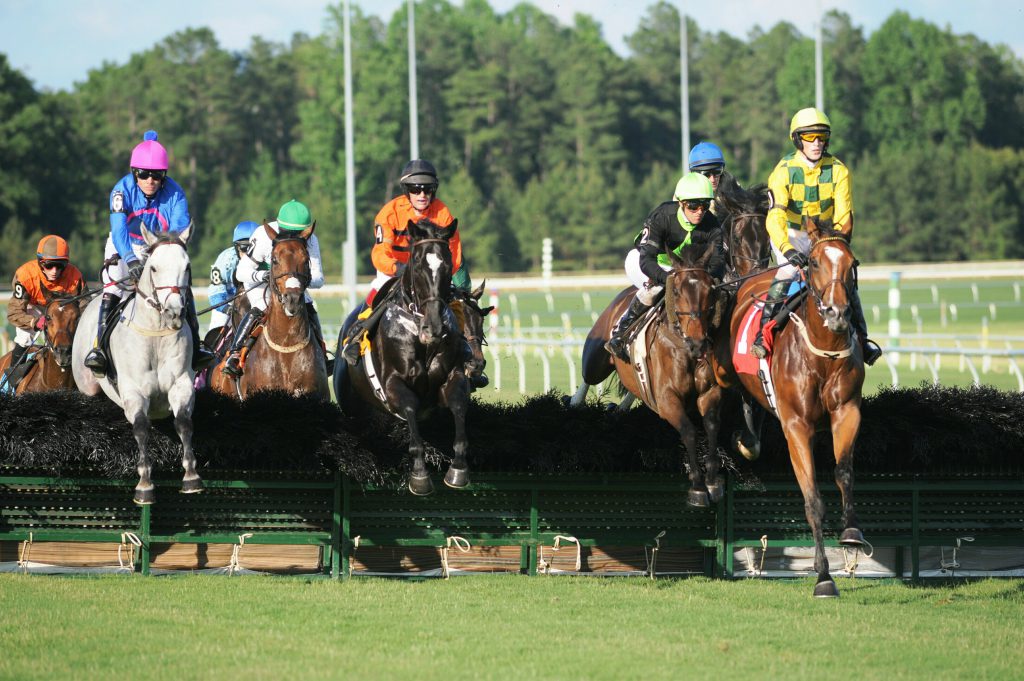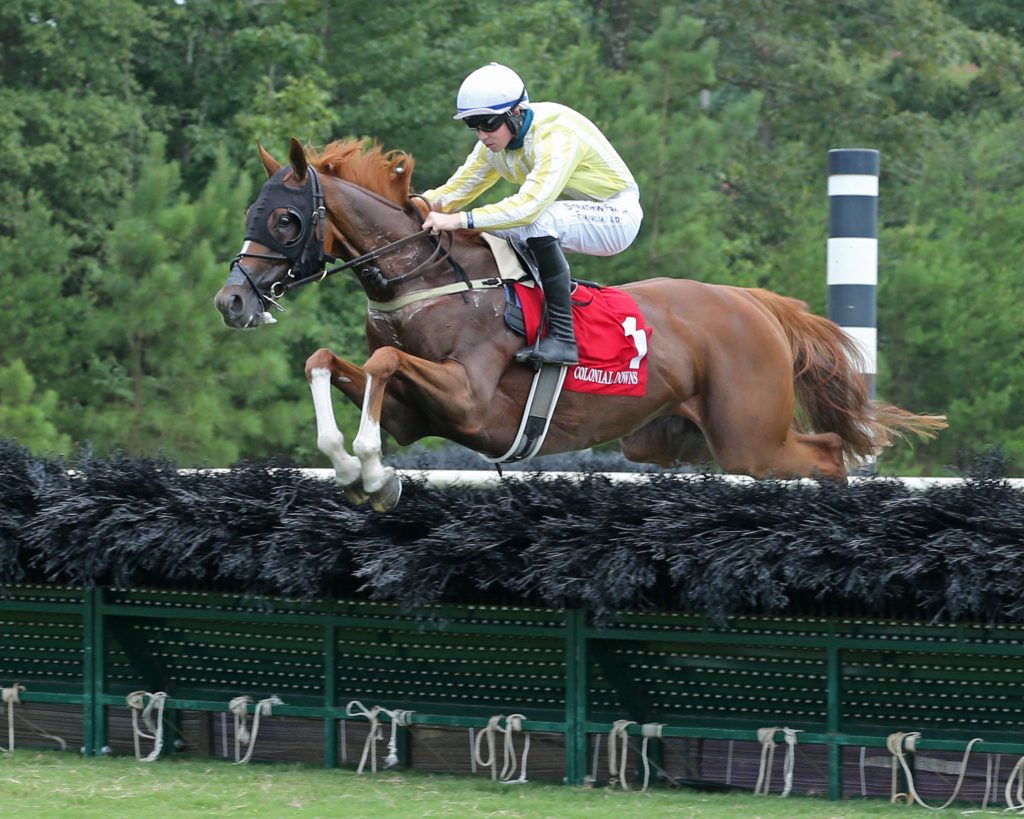History and Evolution of Steeplechase Racing

Steeplechase racing, a thrilling and challenging equestrian sport, has a rich history spanning centuries. Its origins can be traced back to 18th-century Ireland, where it evolved from informal, often chaotic, cross-country races. These early events were marked by their unpredictable nature, with participants navigating varied terrain and obstacles, often using local landmarks as reference points.
Early Development and Origins
The term “steeplechase” originated from the practice of using a church steeple as a prominent landmark during early races. These races were initially informal gatherings, with participants often riding for amusement or local bragging rights. The first documented steeplechase race took place in 1752, near the town of Cork, Ireland. The event, held over a course of about four miles, featured a mix of amateur and professional riders.
Evolution of Courses and Rules
Over time, steeplechase courses and rules underwent significant transformations. Early races were characterized by their rugged, natural terrain, often including ditches, fences, and streams. As the sport gained popularity, courses became more standardized, with the introduction of specifically designed obstacles, such as hurdles and water jumps.
Key Figures and Events
Several key figures and events played a pivotal role in shaping the history of steeplechase racing.
- The Grand National: Held annually at Aintree Racecourse in Liverpool, England, the Grand National is considered the most famous steeplechase race in the world. Its history dates back to 1839, and it has become synonymous with the sport’s unique challenges and traditions.
- The Cheltenham Festival: This annual event, held at Cheltenham Racecourse in Gloucestershire, England, features a series of high-profile steeplechase races, including the Cheltenham Gold Cup, one of the most prestigious races in the sport.
Timeline of Significant Milestones
- 1752: The first documented steeplechase race takes place near Cork, Ireland.
- 1839: The inaugural Grand National race is held at Aintree Racecourse, Liverpool.
- 1860: The first steeplechase race is held in the United States, at the Jerome Park Racecourse in New York.
- 1928: The first Cheltenham Gold Cup is held at Cheltenham Racecourse.
- 1960: The introduction of safety regulations and equipment, including safety helmets and protective vests, significantly improves rider safety.
- 1970s: The development of specialized steeplechase horses, bred for their speed, agility, and stamina, further elevates the sport’s competitive level.
The Unique Challenges of Steeplechase Racing

Steeplechase racing is a thrilling equestrian discipline that demands a unique combination of athleticism, skill, and bravery from both horse and rider. It stands apart from other equestrian disciplines due to its demanding course, which includes obstacles like fences, water jumps, and challenging terrain.
Physical and Technical Demands
The physical demands of steeplechase racing are immense. Horses must be strong, agile, and able to jump high and far, while riders must be incredibly fit and possess exceptional balance and coordination. The course itself presents a variety of challenges, including:
- Fences: These obstacles vary in height and width, and require horses to jump with precision and power. They can be made of various materials, including wood, brush, and stone.
- Water Jumps: These are often the most challenging obstacles, as horses must leap over a body of water. This requires them to have a high level of confidence and trust in their rider.
- Challenging Terrain: Steeplechase courses often include undulating terrain, which can be difficult for horses to navigate. This requires them to have good stamina and endurance.
The technical demands of steeplechase racing are equally challenging. Riders must be able to control their horses with precision and navigate the course with confidence. They must also be able to anticipate the obstacles and make quick decisions, all while maintaining a high level of concentration.
Comparison to Other Equestrian Disciplines, Steeplechase race
Steeplechase racing is distinct from other equestrian disciplines in its emphasis on jumping and its unique course design. Unlike disciplines like dressage and show jumping, which focus on elegance and precision, steeplechase racing is a test of both horse and rider’s endurance and ability to overcome challenging obstacles. While disciplines like eventing incorporate jumping, steeplechase races are specifically designed for jumping, featuring more challenging obstacles and longer distances.
Key Differences Between Flat Racing and Steeplechase Racing
| Feature | Flat Racing | Steeplechase Racing |
|---|---|---|
| Course | Flat, circular track | Undulating terrain with fences, water jumps, and challenging obstacles |
| Obstacles | None | Fences, water jumps, and other obstacles |
| Distance | Shorter distances, typically 5 to 12 furlongs | Longer distances, typically 2 to 4 miles |
| Pace | Fast, with emphasis on speed | More varied pace, with bursts of speed and periods of steady running |
| Equipment | Lightweight saddle and bridle | Heavier saddle and bridle, with safety equipment like a breastplate and martingale |
Strategy and Tactics
Successful steeplechase racing requires a combination of skill, strategy, and tactics. Riders must be able to:
- Assess the course: Riders must carefully analyze the course before the race, taking note of the location and type of obstacles, as well as the terrain. This helps them plan their strategy and anticipate potential challenges.
- Pace the race: Riders must manage their horse’s energy levels throughout the race, conserving energy for the most challenging obstacles and ensuring they have enough stamina to finish strong.
- Navigate the obstacles: Riders must be able to guide their horses over the obstacles with precision and confidence, avoiding mistakes that could lead to a fall or injury.
- Position themselves strategically: Riders must be aware of the position of their competitors and make strategic decisions to gain an advantage. This might involve staying close to the leaders or waiting for a clear opening.
Famous Steeplechase Races and Champions

Steeplechase racing boasts a rich history and tradition, with several prestigious events attracting the world’s best horses and jockeys. These races are renowned for their unique challenges, demanding both athleticism and skill from both horse and rider.
Prestigious Steeplechase Races Worldwide
The most prestigious steeplechase races worldwide are known for their history, challenging courses, and competitive fields. They attract top horses and jockeys from around the globe, making them highly sought-after victories.
- The Grand National, held annually at Aintree Racecourse in Liverpool, England, is considered the most famous steeplechase race in the world. It is known for its challenging course, which includes 30 fences, including the iconic Becher’s Brook and the water jump.
- The Cheltenham Gold Cup, held at Cheltenham Racecourse in Gloucestershire, England, is another prestigious steeplechase race, known for its demanding course and high-quality field of runners.
- The Punchestown Gold Cup, held at Punchestown Racecourse in County Kildare, Ireland, is a major steeplechase race that attracts top horses from Ireland and the UK.
- The Maryland Hunt Cup, held annually at Worthington Valley in Maryland, USA, is the oldest steeplechase race in the United States, known for its challenging course and demanding terrain.
- The Iroquois Steeplechase, held annually at Percy Warner Park in Nashville, Tennessee, USA, is a major steeplechase race that attracts a large crowd and is known for its challenging course.
Characteristics of Successful Steeplechase Horses
Steeplechase horses possess unique characteristics that enable them to excel in this demanding discipline. These qualities are essential for success on the challenging courses and demanding terrain.
- Stamina: Steeplechase races are long and demanding, requiring horses to have exceptional stamina to maintain their pace and jump over numerous obstacles.
- Jumping Ability: Steeplechase horses must be able to clear fences of varying heights and designs with ease and accuracy.
- Agility: The ability to maneuver quickly and efficiently around the course, navigating tight turns and challenging terrain, is crucial for success.
- Temperament: Steeplechase horses need to be calm and focused, able to handle the pressure of the race and the challenges of the course.
- Toughness: Steeplechase horses must be tough and resilient, able to withstand the physical demands of the race and the potential for injury.
Legendary Steeplechase Jockeys
Steeplechase racing has seen some of the most skilled and daring jockeys in the world. These legendary figures have left an enduring mark on the sport, inspiring generations of riders.
- AP McCoy, considered one of the greatest jockeys of all time, dominated the British jump racing scene for over two decades, winning the Champion Jockey title 20 times.
- Ruby Walsh, another highly successful jockey, won the Cheltenham Gold Cup five times, establishing himself as one of the most accomplished riders in the sport.
- Richard Johnson, a skilled and experienced jockey, has won numerous major steeplechase races, including the Grand National.
- Tony McCoy, a renowned jockey, won the Grand National twice, showcasing his talent and skill in this demanding race.
- Bryan Cooper, a rising star in the sport, has already achieved significant success in steeplechase racing, winning several major races.
A Notable Steeplechase Champion: Red Rum
Red Rum, a legendary horse that won the Grand National three times, is considered one of the greatest steeplechase horses of all time. His remarkable achievements and enduring legacy continue to inspire fans of the sport.
“Red Rum was a horse of exceptional talent, courage, and resilience. He was a true champion, and his victories in the Grand National will never be forgotten.” – Sir Peter O’Sullevan, renowned racing commentator
Red Rum’s career highlights include:
- Winning the Grand National in 1973, 1974, and 1977, a feat unmatched in the history of the race.
- Becoming a national icon, with his name and image synonymous with steeplechase racing.
- Leaving a lasting legacy on the sport, inspiring generations of horses and jockeys.
Steeplechase race – The steeplechase, a race that combines speed and agility with the challenge of clearing hurdles and water jumps, is a captivating event. The men’s steeplechase final is particularly exciting, showcasing the grit and determination of the world’s best athletes as they strive for victory in this demanding race.
The steeplechase is a testament to the human spirit’s ability to overcome obstacles and push boundaries.
The steeplechase, a thrilling test of endurance and agility, demands a unique blend of speed and stamina. While the focus is often on the athletes’ physical prowess, one might wonder about the intricacies beyond the track. For instance, does Quincy Hall, a renowned steeplechaser, have real gold teeth?
This question, while seemingly unrelated, delves into the world of personal style and individual choices. Regardless of the answer, the steeplechase remains a captivating spectacle, showcasing the dedication and artistry of athletes like Quincy Hall.